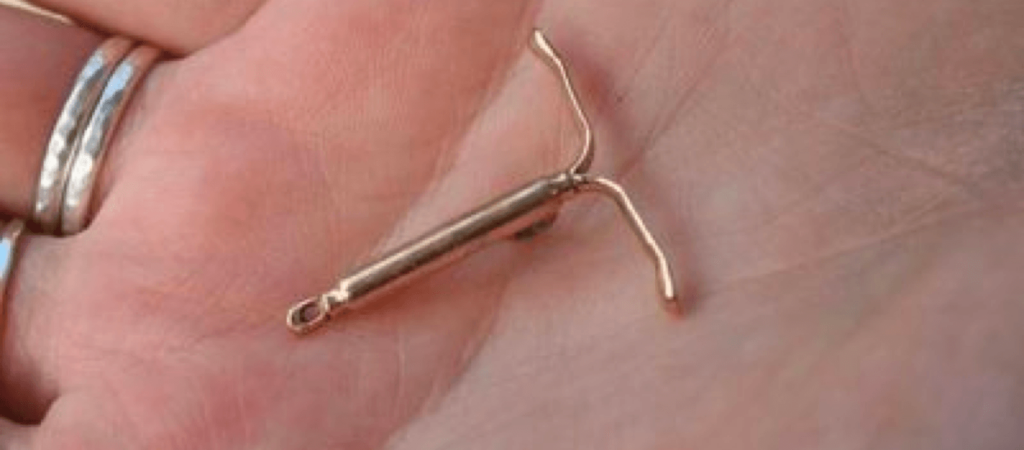IUD as Birth Control
Everything you should know about this long-term contraceptive option

Medically reviewed by Dr. Nancy Shannon, MD, PhD on August 10, 2020
Though birth control pills remain the most popular form of hormonal birth control, women now have more options than ever when it comes to finding what’s right for them. One method currently gaining traction is the intrauterine device, or IUD.
How does an IUD work?
An IUD needs to be inserted directly into the uterus by a doctor. There are two types of IUDs: Hormonal IUDs and copper IUDs. The presence of a “foreign body” in the uterus creates inflammation that stops sperm from swimming to meet the egg and is even toxic to both sperm and eggs. Copper IUDs enhance this by gradually releasing copper. The progestin released from hormonal IUDs also thickens the cervical mucus to stop sperm from entering the uterus. There is no evidence showing that IUDs interfere with an implanted pregnancy.
A copper IUD is effective for up to 10 years, and depending on the brand, a hormonal IUD is effective up to 6 years.
Unlike some birth control methods, IUDs do not contain estrogen, so they’re good options for women who are breastfeeding, are over the age of 35 and smoke, or have other reasons that birth control containing estrogen isn’t a good choice for them.
How effective are IUDs?
The IUD is more than 99% effective in women who use it. Unlike other forms of hormonal birth control, you don’t need to think about or do anything to your IUD in order for it to keep working, so there’s no room for user error.
Hormonal IUDs are effective right away if they’re first inserted within the seven days following the beginning of your last period — otherwise, you’ll want to use physical protection such as condoms for a full week in order for the hormones to take effect. Because copper IUDs are effective immediately upon insertion.
There is an extremely small chance that an IUD can become slanted or dislodged, thus making it less effective.
Experts recommend checking your IUD placement every month. To check that your IUD is in place:
- Wash your hands.
- Sit or squat so you can easily access your vagina.
- Put a finger into your vagina until you feel your cervix.
- Feel for the string ends that should come through your cervix.
- Avoid tugging or pulling on the strings.
If you can feel the strings, your IUD is likely in the correct place. If you can’t feel the strings, they feel shorter or longer than usual, or you can feel the plastic part of your IUD, there’s a chance it may have become slanted or dislodged. If this occurs, begin using another form of contraception until a doctor can readjust the device for you.
What are the side effects of an IUD?
Hormonal IUDs can cause many of the same side effects found in other progestin-containing birth control methods, such as irregular periods, spotting, and acne. Copper IUDs may cause slightly more bleeding and cramping.
Most women who use IUDs will experience no side effects, and those that do often have only mild symptoms that go away after 3-6 months
Are IUDs painful?
While IUDs may be slightly uncomfortable upon insertion, most women don’t notice its presence at all once the procedure is finished. In the first few days of having an IUD, some women experience additional cramps or back pain, but these tend to go away quickly.
During sex, neither you nor your partner should be able to feel your IUD in any way. If one of you can, or if it is causing you discomfort, it has likely come out of place — meaning that you need to use an additional form of birth control for the time being and visit your doctor as soon as possible for readjustment.
How do I get an IUD?
You’ll need to arrange an appointment with a doctor in order to get an IUD and have it inserted. While the procedure is affordable under most insurance policies, it can cost nearly $1000 for uninsured women.
Because of the limiting and prioritization of certain services during COVID-19, you may not be able to see your doctor to have an IUD placed. The American College of Obstetricians and Gynecologists suggests using self-administered contraceptives like the pill, patch, and ring to bridge the gap until an appointment can be made.
Nurx does not offer the IUD, but we do offer a number of other affordable and effective birth control methods for you to choose from. If you’re hoping to find the right option for you, request birth control through Nurx and one of our medical professionals will help you find a method that’s right for you.
This blog provides information about telemedicine, health and related subjects. The blog content and any linked materials herein are not intended to be, and should not be construed as a substitute for, medical or healthcare advice, diagnosis or treatment. Any reader or person with a medical concern should consult with an appropriately-licensed physician or other healthcare provider. This blog is provided purely for informational purposes. The views expressed herein are not sponsored by and do not represent the opinions of Nurx™.





